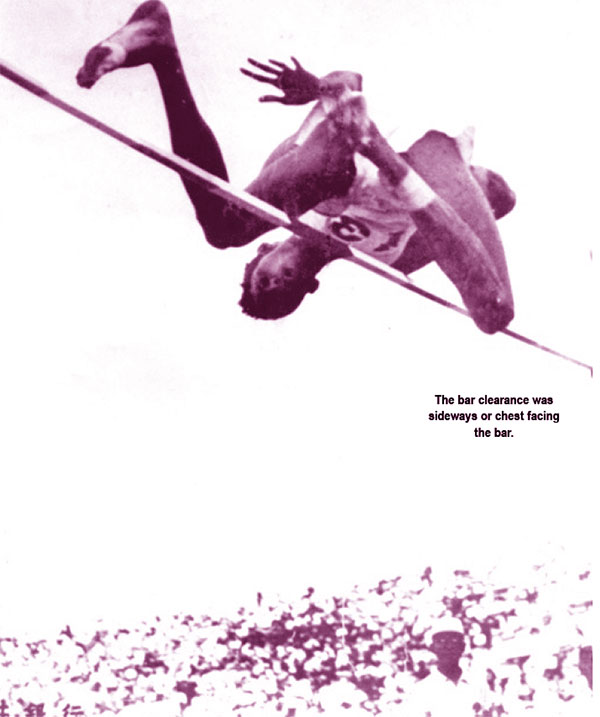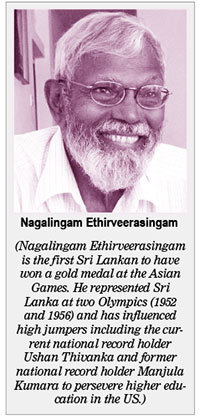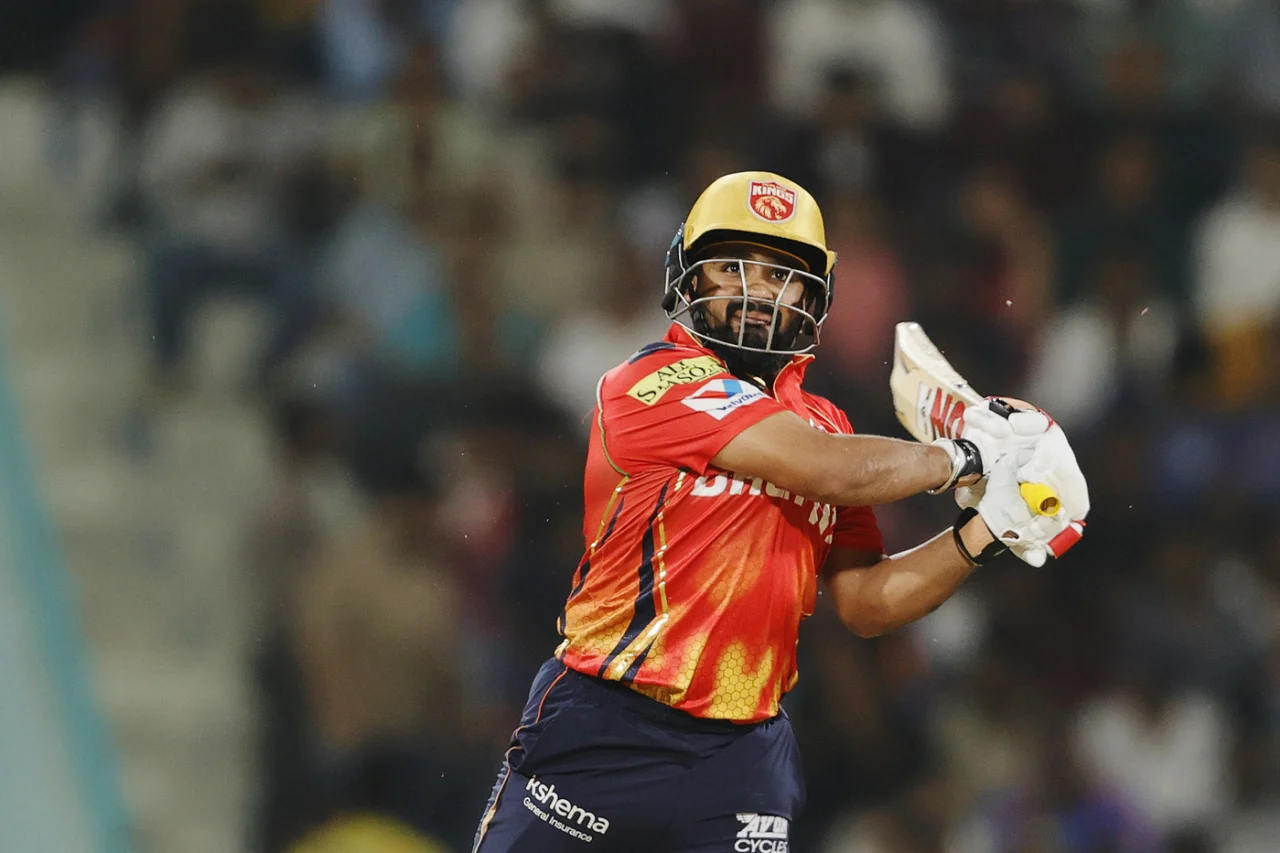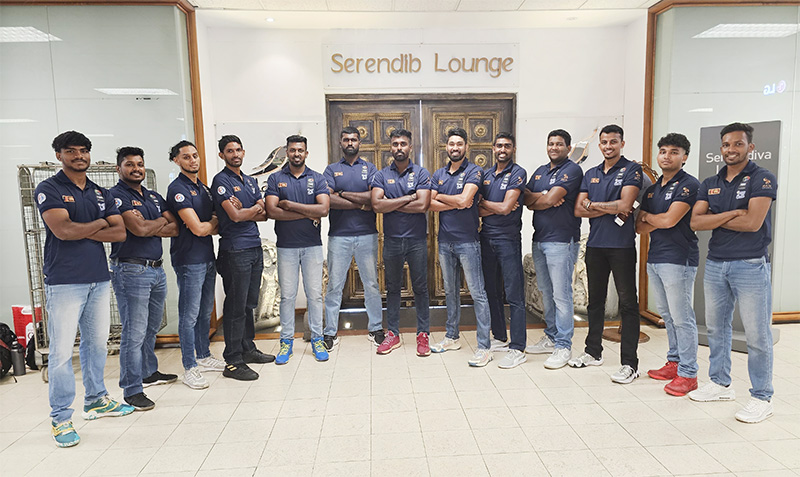Sports
Practical ideas for young high jumpers, athletes, parents, teachers and coaches

An Olympian writes
by Nagalingam Ethirveerasingam
In villages and urban areas in Sri Lanka children play softball cricket, soccer, running and jumping after school, weekends and during end-of-term holidays. This article is based on my experience from 1943. Children can use space available in areas near their houses or in space available around their house. Children are creative, to plan, execute and resolve their problems and learn from their errors.
It is important for children to actively take part in sports with whatever facilities available. If none are available to make them, they can play indigenous games that uses legs, hands, running, jumping, balls, seeds, marbles to create strategies, problem solving and decision making, and learn social and sportsmanship skills. In all games the participants will learn to abide by the rules and decision made by the Referee or Umpire.
In athletics, we dug high jump and pole vault pits. We loosened the soil with a spade. The high jump and pole vault posts were two thick straight branches from the Poovarasu tree planted permanently with nails driven two inches apart. The bar was a one-inch thick branch of the same tree. The pole was a straight branch thicker than the cross bar.
 At school, the high jump, long jump, triple jump and pole vault pits were filled with sand. The pole vault standards were made of wood with a base. It had a movable part inside the main post that can be raised to 12 or 13 ft. For high jump the same posts or posts 6’ 6″ with a base is used. All wooden posts were made by carpenters in Jaffna adopting design in sports books or modeled after the posts in schools in Colombo. The poles were bamboo of different length and thickness. They were cured in fire made from dry leaves to strengthen them.
At school, the high jump, long jump, triple jump and pole vault pits were filled with sand. The pole vault standards were made of wood with a base. It had a movable part inside the main post that can be raised to 12 or 13 ft. For high jump the same posts or posts 6’ 6″ with a base is used. All wooden posts were made by carpenters in Jaffna adopting design in sports books or modeled after the posts in schools in Colombo. The poles were bamboo of different length and thickness. They were cured in fire made from dry leaves to strengthen them.
The loosened soil or sand in the jumping pit dictated we land in one or both feet in the high jump or pole vault. The bar clearance was sideways or chest facing the bar. In the high jump most used the scissors style and land in one or both feet. Older jumpers used Eastern Cut Off. In that style they ran from the front of the bar, made a curve going outside one of the posts and took off with one foot.
In 1948 we read in the papers the results of the athletic events. We saw the pictures of events. We saw Harrison Dillard won the 100m. Australian John Winter won the high jump using the Eastern Cut-Off style. In 1949 my school Principal, Rev. C.A. Smith took the whole school to see the London Olympics at the Regal Theatre near the Fort. We saw the 400m hurdles and Duncan White winning Silver Medal. It is then I wanted to compete in an Olympic Games someday. Did not tell anyone. I did not think at that time that I will take part in the 1952 Olympics in Helsinki.
I am sure a 14-year-old or older watching the 2020 (2021) Olympics on television will be inspired to train to take part in the 2024 Paris Olympic Games or Los Angeles Games in 2028.
If you are a beginning high jumper dreaming of competing in future Olympic Games, start with jumping using the scissors style. But with a run-up with a 4-stride curve at the end before you take-off. A sand pit, or a pit with loosened soil is sufficient. The posts and bar can be from branches like described above. This advice is for high jumpers, coaches and parents. Such beginning will help to learn the fundamentals of high jumping and requirements for a technically correct run-up and take-off. It will help to clear the bar using the flop style. When you can jump 1.55m or 1.60m with scissors you can then learn to jump using the flop from an experienced coach who has coached high jumpers who had jumped at least two metres or higher.
Many people, parents and teachers often assume that, jumping, running, hurdling and throwing does not teach children about what is required by the curricula and National Examinations. This is far from the truth. Athletics, cricket, football and other games teach principles of science, especially physics. We learn principles of social science, mathematics and about the working of the muscles, exhaustion, recovery and abiding by the rules of the games and decisions of referees and umpires. A sportsperson is consumed by sports and desire to excel they spend much of their study time daydreaming or figuring out how best to practice and perform better.
The best way the education system can help the sportspersons to do well in sports and studies is to require students to earn credit passes in the subjects at the end of a term to represent the school and take part in sports. The sportspersons will earn the Credit pass grade to represent the school and take part in sports. Such a system is practiced in the school and university system in the United States. Those who represent the United States in the Olympic Games or win medals are all either students in universities or graduates of universities. Sri Lanka athletes and sportspersons have the same capacity to be great in studies and sports if opportunities to learn and compete.
The choice is ours to motivate and give the opportunities to our sportspersons to excel in sports, studies and profession.
Latest News
IPL 2025: Prabhsimran and Iyer see Lucknow Super Giants off with ease

Punjab Kings (PBKS) bossed both the powerplays en route to their second successive win in IPL 2025. After opting to bowl on a fairly two-paced red-soil pitch, they left Lucknow Super Giants (LSG) at 39 for 3 in six overs. Abdul Samad and Ayush Badoni helped LSG overcome that poor start and post 171 for 7, which was a par score according to Nicholas Pooran the holder of the Orange cap.
Pooran’s assessment, however, might have changed quickly after Prabhsimran Singh clattered a 23-ball half-century in the chase. Prabhsimran claimed 45 of the 62 runs PBKS had scored in the powerplay. There would be no way back for LSG, who suffered their second defeat in three games. Shreyas Iyer completed PBKS’ demolition job with an unbeaten 52 off 30 balls.
The first ball that Arshdeep Singh bowled to Mitchell Marsh stopped on him, seamed away from a leg-stump line, and had him skying a catch to Marco Jansen at short third. After having hit fifties in his first two innings this season, Marsh departed for a golden duck.
It was Lockie Ferguson who shared new-ball duties with Arshdeep, ahead of Jansen. Ferguson usually operates with the older ball for New Zealand and various franchises, but PBKS inverted his role on Tuesday to take advantage of a match-up with Pooran. Before this fixture, and across all T20s, Ferguson had snared Pooran four times in 17 balls at a strike rate of 7.05.
However, Ferguson ended up bowling just three balls to Pooran on the day. After being picked away for three fours by Aiden Markram, Ferguson bowled him via an inside edge for 28 off 18 balls.
With two left-handers in the form of Pooran and Risbah Pant in the middle, PBKS matched Glenn Maxwell’s offspin up with them. Maxwell removed Pant for the third time in four innings in the IPL. The IPL’s most expensive signing at INR 27 crore, Pant has managed just 17 runs in three innings at a strike rate of 65.38.
Despite wickets falling at the other end, Pooran remained positive, hitting Maxwell for back-to-back fours in the seventh over. A cat-and-mouse game then ensued between Pooran and Yuzvendra Chahal. The wristspinner’s plan was to hide the ball away from the swinging arc of Pooran with wrong’uns. In his first over, Pooran cracked his wrong ‘uns away for a brace of fours, but in his next Chahal had Pooran holing out to wide long-off for 44 off 30 balls with a loopier wrong ‘un.
When Jansen had his South African compatriot David Miller caught behind for 19 off 16 balls, LSG slipped further to 119 for 5 in the 16th over. Badoni and Samad then briefly changed the mood and tempo of the game with a 47-run partnership off only 21 balls. Samad had launched his first ball, from Jansen, for six after stepping out and then left jaws on the floor when he reverse-scooped Arshdeep over the keeper in the 18th over, which cost PBKS 20 runs. Arshdeep had both batters holing out in the final over, though, to keep PBKS below 180.
Prabhsimran relishes pace on the ball and it was no different on Tuesday. Unlike the first innings, the ball skidded onto the bat in the second, with Prabhsimran ramping Shardul Thakur and Avesh Khan for six and four respectively in the first two overs.
Pant responded by throwing mystery spinner Digyesh Rathi at Prabhsimran and Priyansh Arya. Rathi created a chance with his second ball, but Marsh fluffed an overhead catch at slip. The drop, though, cost LSG just one run as Rathi had Arya caught by Thakur at mid-on for 8.
Prabhsimran took down Ravi Bishnoi in the last over of the powerplay. He lined up his wrong ‘uns and slog-swept him with the turn over mid-on and square leg. He then greeted dart-it-in left-arm fingerspinner M Siddarth, who was picked ahead of Prince Yadav as LSG’s Impact Player, with a switch-hit four. He brought up his fifty in more sedate fashion with a tucked single.
It felt like LSG needed something special to dismiss Prabhsimran. That something special was a tag-team catch near the boundary from Badoni and Bishnoi. He holed out for 69 off 34 balls.
PBKS required 62 off 59 balls, which was enough for Iyer to knock off a fifty of his own. He forged an unbroken 67-run stand off 37 balls with Impact Player Nehal Wadhera to finish the job with more than three overs to spare.
PBKS established themselves as the early pace-setters, alongside Royal Challengers Bengaluru (RCB) and Delhi Capitals (DC), in IPL 2025 with two wins in two games.
Brief scores:
Punjab Kings 177 for 2 in 16.2 overs (Prabhsimran Singh 69, Shreyas Iyer 52, Nehal Wadhera 43*; Divesh Rathi 2-30) beat Lucknow Super Giants 171 for 7 in 20 overs (Aiden Markram 28, Nicholas Pooran 44, Ayush Badoni 41, David Miller 19, Abdul Samad 2; Arshdeep Singh 3 for 43, Lockie Furgeson 1-26, Glenn Maxwell 1-22, Marco Jansen 1-28, Yuzvendra Chahal 1-36) by eight wickets
[Cricinfo]
Sports
Trinity, St. Anthony’s out to end decade long victory drought

106th Hill Country Battle of the Blues
Arch rivals Trinity College Kandy and St. Anthony’s College Katugastota have remained as two of the highest ranked schools cricket teams in the Under 19 Division I Tier ‘A’ cricket tournament this season. After having reached the business end of both the two-day tournament and the limited overs tournament, the two teams can take the enviable title as ‘the most successful Big Match rivals’ this season. That will serve as an inspiration for both teams when they meet for the 106th time at the annual big match starting on Thursday.
Though both teams have done equally well this season, Trinity led by Malith Rathnayake are in the annual battle as the team to beat. They have reached the finals of both the two-day tournament and the limited overs tournament.
Trinity’s strong batting line up includes one of the tournament’s highest run scorers in Dimantha Mahavithana who has a double century and four centuries against his name. Chaniru Senaratne, Pulisha Thilakaratne, Vathila Udara and Dinal Fernando have often propelled Trinity to challenging scores.
Thisal Yapa is likely to open their bowling attack, while skipper Rathnayake leads the spin department. Rathnayake is among the top ten wicket takers of the two-day tournament.
St. Anthony’s are led by Charuka Ekanayake. St. Anthony’s reached the quarter-finals of the two-day tournament under Ekanayake’s captaincy. They reached the semi-finals of the limited overs tournament where they were eliminated by the arch rivals.
Ekanayake is expected to play a lead role in both batting and bowling. He has scored over 500 runs and taken over 50 wickets with his left-arm spin. Deputy skipper Januka Rathnayake who opens batting, all rounders Kevan Ramika and Ryan Gregory and speedster Bimash Samarasinghe are the players to watch in the St. Anthony’s camp.
These two teams have often found two days of cricket insufficient to decide a winner. This year the big match is played as a three-day encounter. Both teams will be eager to end a winless stretch which is 13 years long now. No team have recorded a victory after Trinity last won under the captaincy of Niroshan Dickwella in 2012. St. Anthony’s last won under U.D. Alwis’ captaincy in 1992.
Trinity lead the victory tally 23-11. The big match has witnessed 71 encounters end in draws.
Teams
Trinity (from): Malith Rathnayake (Captain), Vathila Udara (Co Vice Captain), Dimantha Mahavithana (Co Vice Captain), Jayavi Liyanagama, Puleesha Thilakaratne, Rajindu Thilakaratne, Kavindu Jayarathne, Dinal Fernando, Sethmika Seneviratne, Adham Hilmy, Thisal Yapa, Ranul Gunaratne, Chaniru Senaratne, Kanilka Anthony, Oshana Lokuge, Praveen Rukunayake, Mahendra Abeysinghe, Viduneth Dammage, Sweath Anurajeewa.
Officials: Naveen Ekanayake (Head Coach), Thisaru Dilshan (Asst.Coach), Bryan Senaratne (Master in Charge), Bandula Pushpakumara (Trainer), Thilanka Dissanayake (Physiotherapist).

St. Anthony’s College Team with officials.
St. Anthony’s (from): Charuka Ekanayake (Captain), Januka Rathnayaka (Vice Captain), Sanuka Kalpana, Okitha Fernando, Kawshika Kumarasinghe, Kevan Fernando, Bimash Samarasinghe, Dinura Ganegoda, Rayan Gregory, Sadew Amarakoon, Naden Ebert, Thilina Edirisinghe, Dinul Wijesinghe, Nikil Abilash, Yohan Senanayake, Vishwa Thilakarathne, Imeth Rajapaksha, Kavindu Nawanjana, Dasun Welianga.
Officials: Bandula Ekanayake (MiC), Priyantha Kumara (Trainer), Kavinda Jayasooriya (Head Coach).
by Reemus Fernando
Sports
Colombo Basketball Club head to Madras for SABA showdown

Colombo Basketball Club jetted off to Madras last evening, ready to stake their claim at the SABA Club Championship, South Asia’s premier club-level basketball showdown, set to unfold in the bustling South Indian city.
This five-team tournament brings together the crème de la crème of South Asia’s domestic basketball scene, and Colombo BC earned their stripes after edging out Colombo Bulls in a one-sided finale of the local championship held last month.
Colombo’s traveling squad boasts a dynamic blend of experience and youth, featuring: Narvin Ganesh, Charuka Fernando, Mindika Wijenayake, Sanjeewa Kulamina, Nimesh Fernando, Baratha Ranatunga, Dasun Mendis, Sasindu Gajanayake, Rukshan Atapattu, Methika Jayasinghe, Brent Thevakumar, Sharo Perera, and Simron Yoganathan.
Gaja Sports and Sunil Traders are backing their campaign as main sponsors while My Cola steps in as the official clothing sponsor.
-

 Sports3 days ago
Sports3 days agoSri Lanka’s eternal search for the elusive all-rounder
-

 News4 days ago
News4 days agoGnanasara Thera urged to reveal masterminds behind Easter Sunday terror attacks
-

 News2 days ago
News2 days agoBid to include genocide allegation against Sri Lanka in Canada’s school curriculum thwarted
-

 Business5 days ago
Business5 days agoAIA Higher Education Scholarships Programme celebrating 30-year journey
-

 News3 days ago
News3 days agoComBank crowned Global Finance Best SME Bank in Sri Lanka for 3rd successive year
-

 Features3 days ago
Features3 days agoSanctions by The Unpunished
-

 Latest News1 day ago
Latest News1 day agoIPL 2025: Rookies Ashwani and Rickelton lead Mumbai Indians to first win
-

 Features3 days ago
Features3 days agoMore parliamentary giants I was privileged to know











